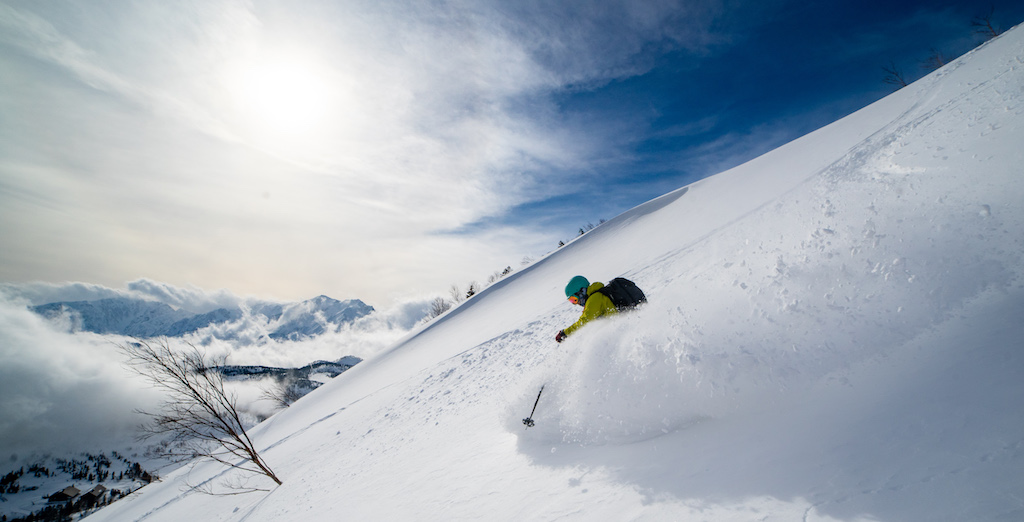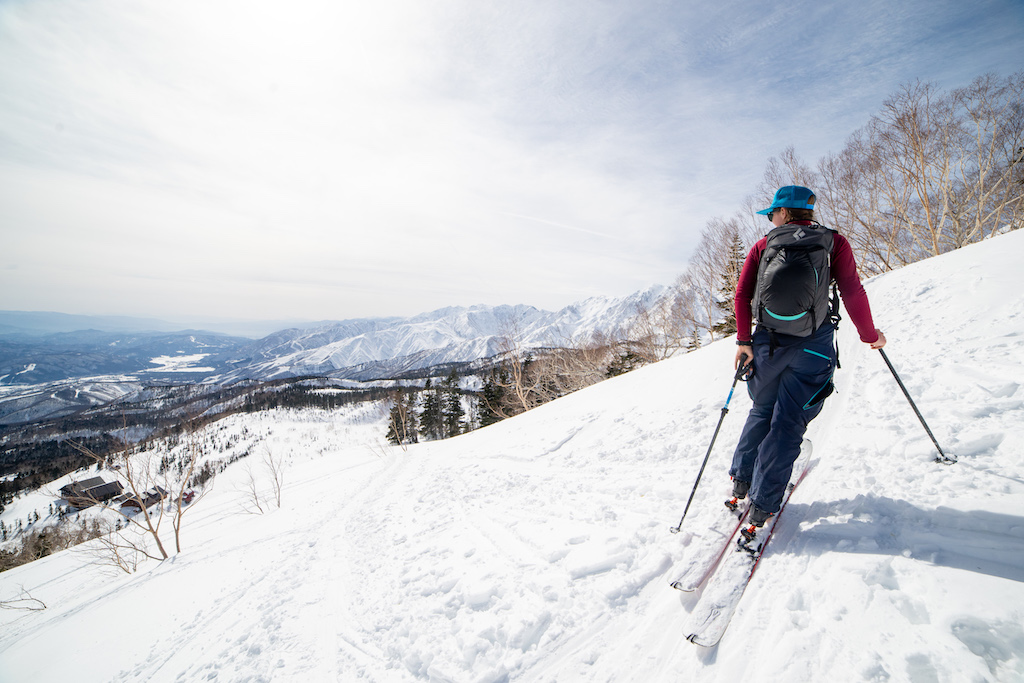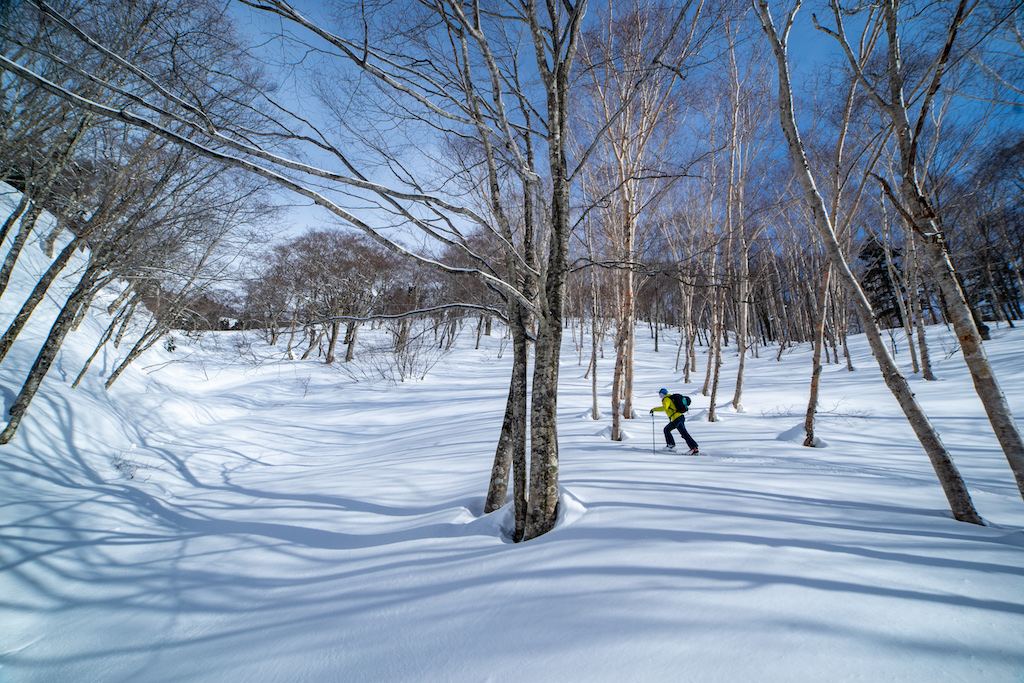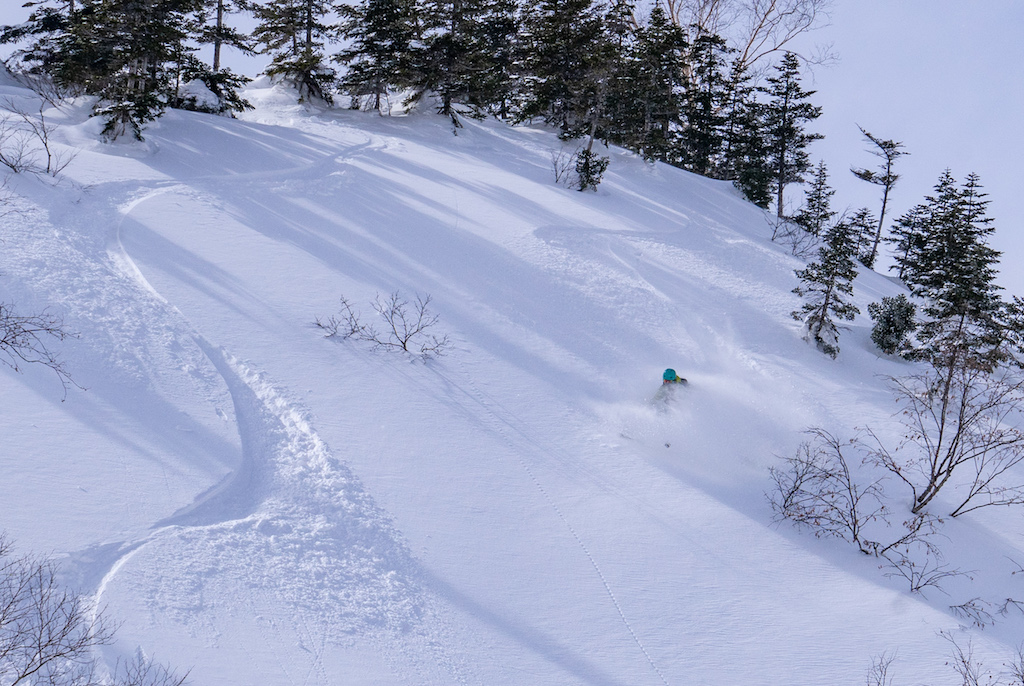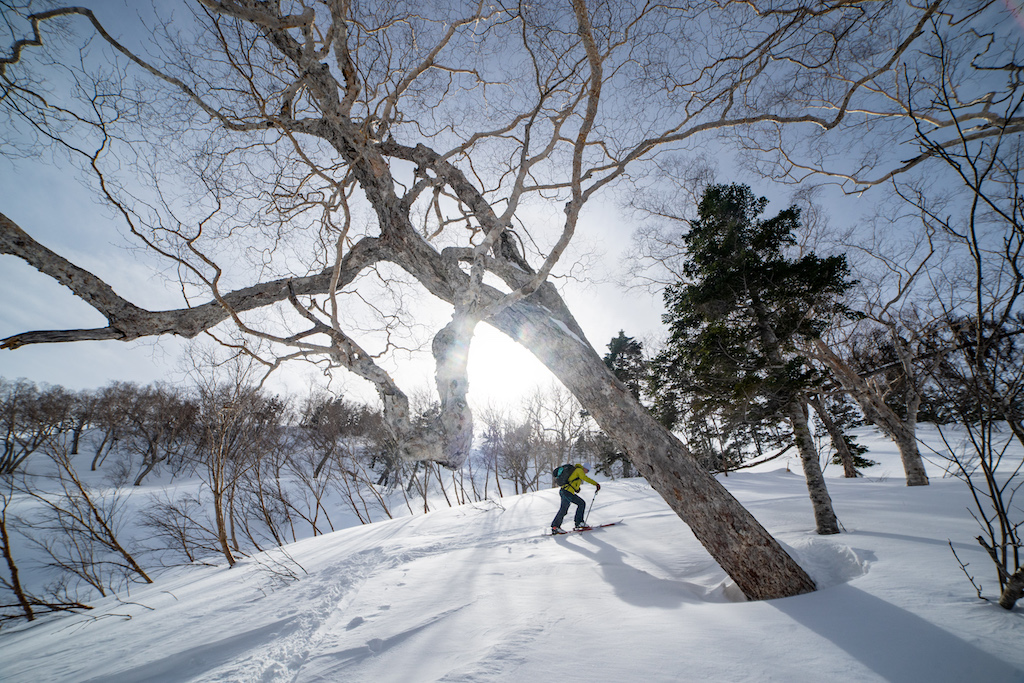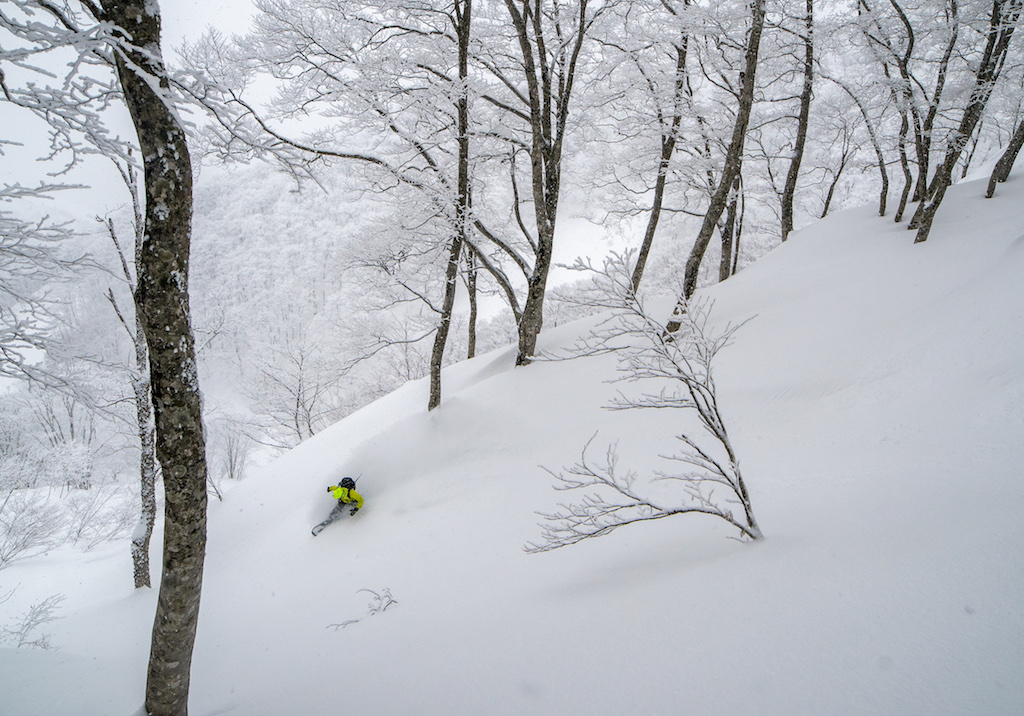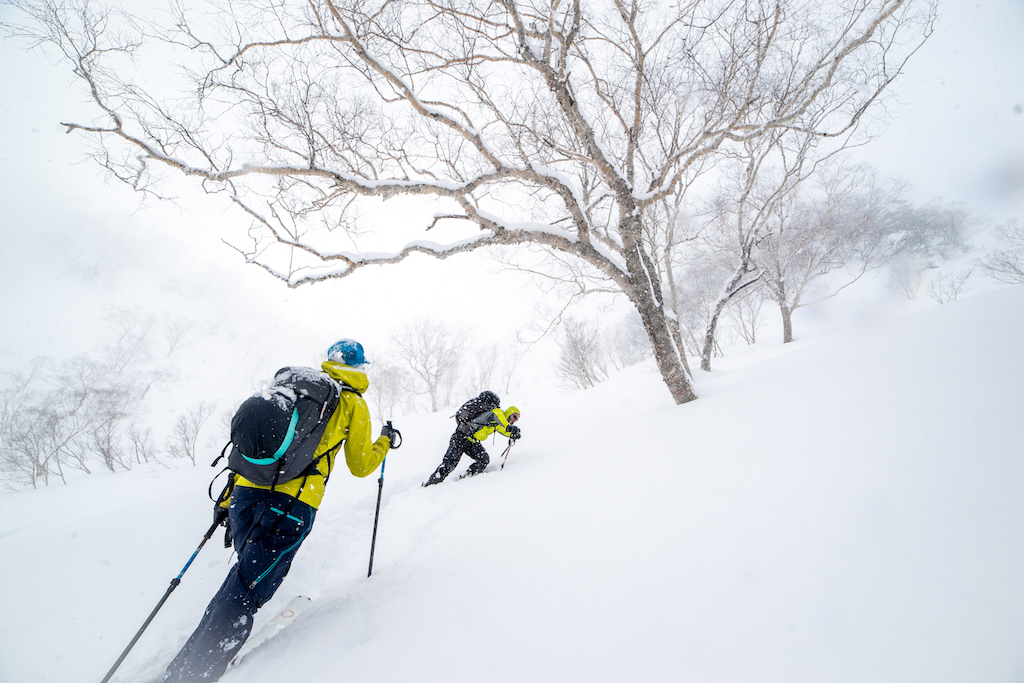If running around the Tokyo train station with large ski bags was a recognized sport, I could be its champion. Despite my successfully navigating to the right platform, we missed the train by only two minutes. I felt so defeated I could cry…until I realized another train was arriving 15 minutes later. That’s at least one of the charms of traveling in Japan: regular, reliable public transport, even with ski bags. (We did learn that you could ship your ski bags to your destination from the airport if you want to avoid the chaos of traveling with them.)
Louie and I knew that the journey to Japow would be worth it. After years of watching various ski movies full of endless, lightest, fluffiest snow, last year we jumped on a plane to Tokyo, on a bullet train to Nagano and on a bus to Hakuba. In less than 24 hours we found ourselves in an AirBnB in the town of Hakuba a mile away from Tsugaike Kogen Ski resort.
Japan has been on my list of ski destinations for a while. There’s something so alluring about skiing on an island, in a place where I wouldn’t expect to see tall snowy mountains, a place so different then the culture I am used to. The resulting experience from the trip itself is hard to describe in a single blog post but here’s a small taste of backcountry skiing in Japan to get you excited to start planning your next international adventure.
During our two weeks in Japan, we had planned to stay around the Nagano area on Main Island, as the area holds lots of options for skiing that are relatively close to each other. The more famous regions we looked at were Hakuba and Myoko. Nagano is about a four hour drive from Tokyo. We purchased the JR East Rail pass and opted to not rent a car. There are a few reasons why we decided against a rental: driving on the left side of the road in the city and in snowy conditions in unfamiliar terrain for one, and having to figure out parking and extra cost for gas. The rail pass allowed us to save on cost, skip traffic delays, have a predictable schedule, cut the travel time in half as well as give us the ability to experience bullet trains. If you do plan to rent a car in Japan, you are required to have the International Driver’s Permit. You can get one through an AAA office in the states.
In order to allow ourselves maximum flexibility to follow the fluffiest pow from place to place, we winged it when it came to accommodations. We had a place booked in Hakuba for three nights; after that we hoped to play it by ear and book our next lodging at the last minute. Usually that plan would have worked out okay, but the second weekend in February is a national Japanese holiday. It was also Chinese New Year; we quickly learned that accommodations were limited all around. We got extremely lucky and snagged a spot by Iwatake resort after a cancellation and lots of refreshing of kayak.com, expedia.com, booking.com, etc.
The first few days of skiing in Hakuba provided exceptional views of the Japanese Alps, but mediocre skiing with a side of horrendous winds. It had rained in Hakuba a week before we got there; there was a thick crust just about everywhere. No blower powder for us, we thought. Well, we were wrong. After two days, the first round of the famed Japow snow hose turned on. The snow came in heavier than expected, but that was favorable as it masked the crust and resulted in amazing skiing.
We explored the backcountry areas outside of Tsugaike Kogen and Hakuba Cortina resorts located a few miles away from the town of Hakuba. Both provide a one way ticket up to the top of the ski area, for a slim price of about 15 bucks. Tsugaike had fun lower angle tree skiing opportunities as well as bigger alpine access when visibility wasn’t obscured by thick snow clouds. Most treed terrain is ~30min skin from the top of the gondola, but well worth it. Plus, you get a really long run back to the base at the end of the day!
We found Cortina sidecountry a bit harder to navigate as the top of the resort had steep and jagged terrain around it. We purchased two single lift rides to get to the highest point of the resort. The crust was a bit more prevalent compared to the conditions we found at Tsugaike, so we only skied at Cortina for a day. The sidecountry there provided awesome steep tree skiing accessible by taking lifts, traversing and bootpacking, no touring gear needed.
After four days of exploring Hakuba, we were starting to get the itch to explore another area and find better Japow snow conditions. A bit limited by cheaper accommodation options mainly due to our desire for flexibility, we decided to explore another resort on the Honshu.
After a bus and a quick bullet train, we arrived in Nozawa to be greeted by sun and warmth. We explored the town and were getting psyched for some spring skiing the next day. We were wrong, once again. We woke up to 10 cm of fresh in town and no sun in sight. That continued every night for four days. Lots of powder skiing and onsen soaking followed.
With the amount of snow Japan can get out of an adequate storm, it’s easy to get too jazzed on pow skiing and forget the importance of traveling safely in the backcountry. Japan certainly has lots of avy terrain (there have been several avalanche incidents this year, and terrain traps are common. Add big precipitation amounts after a rain event, or lots of wind, or rapidly rising temps, and dangerous avalanche conditions follow. It is important to continue to evaluate the snowpack and terrain every step of the way. Japan has avalanche forecasting resources, but mostly for more popular areas. I would recommend starting to track the weather and precipitation amounts about a month prior to your trip to be more familiar with the snowpack. We opted to not have a guide, but there are lots of guides available if you are looking to have someone show you around. Make sure to check their background and credentials before committing.
Both Louie and I chose to travel with Black Diamond avalanche backpacks – JetForce Tour 26L and JetForce UL. Based on research we did prior to the trip, we found that the cylinders in those packs are safe to fly with. We personally didn’t run into any issues while traveling, but we know friends who have had troubles traveling with JetForce set ups. Our recommendation is always to double check with the airline regarding the specific set up before arriving at the airport. It is also helpful to have a printed version of the manufacturer data sheet describing the complete content of the airbag, such as cartridge and trigger (these usually can be located on the manufacturer’s website).
We saved one day before heading home to explore Tokyo. The plus of having the JR pass was that it worked on certain Tokyo trains as well. We leveraged that to visit various parts of the city. The highlights were the Nemuro Hanamaru Sushi, Skytree, anime district, an equivalent of a Japanese REI, and the famous Shibuya crossing.
Japan hasn’t been having the best year in 2020 I’m hearing, although the always unreliable instagram report suggests otherwise. If there was one thing I learned while being in Japan (and also living in the pnw), the weather sure is unpredictable. It may pour rain for two days straight, but as the air cools, and that rain turns to snow, feet of precip appear. Sometimes it takes a week or two to cycle, which can be frustrating during international travel. My only advice to you is to go for longer if you can, embrace flexibility, and if the weather doesn’t line up, enjoy the wonderful Japanese culture, delicious foods and hot baths.
For more Japan inspiration, check out Louie’s Hokkaido trip reports. If you want to streamline your travel process, check out guided trips.
WildSnow Girl, Julia Dubinina, is a weekend warrior chasing snow in winter and sun in summer. A lover of long tours and steep skin tracks, she explores the Pacific Northwest and beyond. When she is not out adventuring, she is working away at her corporate desk job for a software company to make her next adventure happen.

